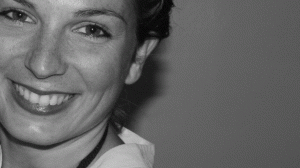This article originally appeared on TwentyThirty.
Implementing change in an organization or business can be a difficult task for leaders. With over 20 years of experience in the field, Talita Ferreira gives us an insight into what leading change is all about.
Can we seriously drive other people to change? I don’t think so. Change is a process of accepting someone else’s ideas. Therefore, it will always be a challenging process, especially in large multinational organizations. There will always be people who understand the logic and purpose of the change and who immediately buy in; these people are known as the early adopters. There will be a faction of people who are open to being convinced; known as either the early or late majority. For these people, it will be a matter of time and it will depend on the intensity, consistency, and frequency of the change messages, including those vital behaviors demonstrated by the senior leaders within the organization leading the change.
"Change is a process of accepting someone else’s ideas."
Talita Ferreira

It will also matter how these individuals are inspired to change, as opposed to being told to change. Then, there are the laggards who will take longer and will need more time to adapt. Lastly are those people who will never go on the change journey. The difficulty here, for leaders, is to accept this situation and not to invest too much emotional energy in these people, unless they become disruptors of the change, in which case swift action is necessary.
I recently held a talk at an Integrity and Legal Affairs conference in Germany as an impulse speaker for change. One of the questions asked of me was: "How do we convince large parts of an organization to change, especially if they are operating in different cultures and they might not see the need for change?" At the time, my answer focused on finding the common ground around the change, such as shared values or the benefits for everyone. Of course, the answer is far more complex and I was inspired to elaborate, as below.
[recommended:8507]
1. Find the right supporters for the change
If the board (top management) of an organization is leading a top-down change, it is immensely important to get the senior (middle management) leaders bought into the change. Gallup refers to leaders at this level as the permafrost: relatively impossible to thaw. The secret is to find those early adopters in this group and to convert them to being champions for the change. In turn, they will help convince the rest of the organization. Plus, my recommendation is that workshop-style, peer-to-peer learning sessions, with a trust-based psychologically safe environment, can be excellent multiplicators.
2. Adapt the change approach for different people
We are all different and we respond to messages in different ways. Having someone from the headquarters of an organization fly in to a foreign subsidiary and explain the why, what, and how is often not good enough. Especially when cultures are diverse or power play and hidden agendas between countries are the play of the day. Individuals also learn differently and an impactful audio-visual message adapted to their unique situation might suit them better. My advice is to tailor the change focus depending on the culture you are approaching, try to walk a moment in ‘their shoes’ and suggest interactions and arguments that might resonate with them from their perspective.
"The top prize is when the change you want to create is role-modeled in the behaviors demonstrated by leaders and individuals and a momentum starts to form."

3. Repeat, repeat, repeat
I cannot emphasize enough how the change message needs to be repeated using different approaches, events, interactions, and methods of media. This was one of the most frustrating aspects for me to grasp as a former Chief Financial Officer trying to embed cultural change in a large organization. Previously, I had worked with finance professionals in my earlier career, where I had explained something new only once and they would be off, taking action and getting things done. However, from my experience, this is not how it works with a change agenda, especially cultural change. I had to learn to be patient with the laggards and ensure that the cultural messages were embedded in every opportunity we had to communicate, especially via daily interactions. The top prize is when the change you want to create is role-modeled in the behaviors demonstrated by leaders and individuals and a momentum starts to form.
4. Start with yourself
As leaders transforming organizations we must be prepared to start with ourselves. Making small adaptive changes every day that can be seen by the individuals around us are far easier to digest and believe than the messages we tell everyone. Getting one department whole-heartedly behind a change, changing their mindset, and starting to showcase the examples of change are a good barometer for whether a shift is happening. Only after starting with ourselves can we move on to finding other supporters, helping us to maximize our efforts.
"As leaders transforming organizations we must be prepared to start with ourselves."
Talita Ferreira

5. Convince other people
This is a process that does not simply involve telling people why the change is a good idea. My experience has taught me that we sometimes need to repeat the same message in many different ways using different media stimulus to communicate our message. Everyone is not immediately convinced to take up the change baton and start moving. Finding common ground, such as shared values and motivations, can be a great way to get other people to buy in. I am not a firm supporter of the carrot and stick strategy, although many organizations believe in this approach as a way to motivate change. Be aware that it is proven to have limited longevity, especially in diverse environments with differing age profiles and basic motivators.
6. Find advocates for change
It is always better if other people are convincing their peers as opposed to the leaders only being involved in the change process. We need to create enough engagement and spot the people who are the early supporters; the ones who are passionate about the change. Often, change agents are chosen by their bosses or the leadership team and they don’t necessarily want to be leading the change, or they are not good at it and prefer to do something else. Finding those people who are passionate about the change and with the enthusiasm and drive to convince other people is what is needed. These advocates inspire other people to change and a multiplication effect is soon achieved.
7. Never ignore the underlying fears
Often, we ignore the underlying fears that people have because of change. They might feel they will lose control because the situation is not familiar to them or what they have experienced before, the fear of the great unknown. Or, it could be a fear of looking bad in the new environment; or a fear of feeling as if they won’t be able to perform, shine, or do a good job once the change is embedded. Acknowledging these fears openly and creating the safe space to talk about it in smaller groups, can help people to be open to the change and go on the change journey faster.
8. Show tenacity
Finally, accept that we will not convince everyone at the same pace and several people will need more time. There will always be people who never go on the change journey and that is fine, too. If the new environment is too offensive for them, they might want to move on and try something new. Leaders should never beat themselves up about the people who don’t go on the journey. We should use our inner resilience to come up with new arguments, find other supporters, and live to battle another day.
I am convinced that we must inspire other people to change through various impulses that help them understand the purpose of the change and what is in it for them; how the change can improve their lives. We need to focus on the ‘togetherness’ in change, to inspire other people; moving from change being challenging to change being a thriving opportunity through a process of doing it together.
[recommended:8231]
Talita Ferreira
Talita Ferreira is a thought leader and change maker who is passionate about living in true authenticity, purpose-driven collaboration, and harnessing diversity of thought. She is the founder and CEO of Authentic Change Solutions.
This article is presented in collaboration with TwentyThirty.
TwentyThirty is an online magazine presented by the BMW Foundation Herbert Quandt. It sheds light on the social, political, and environmental challenges we face and features inspiring Responsible Leaders who are working to solve them. Follow their work on Facebook.










